Do you have a question about the Kärcher K 7.650 and is the answer not in the manual?
Symbols indicating dangers, warnings, and cautions in the operating instructions.
Symbols on the appliance, environmental protection, and ingredient information (REACH).
Precautions for handling mains plug, power cord, and extension cables.
Dangers of directing high pressure jets at people, animals, or objects.
Warnings regarding flammable liquids, hazardous substances, and explosion risks.
Risks associated with cleaning vehicle tyres and valves with high pressure.
Measures to prevent children from playing with the appliance or suffocation from packaging.
Operator's duty to use appliance correctly and ensure bystander safety.
Recommendation to wear protective clothing and safety goggles.
The appliance switch prevents unintentional operation.
Locks the trigger gun lever to prevent inadvertent starts.
Prevents exceeding working pressure and stops pump when trigger is released.
Overview of appliance parts and ensuring stability for safe operation.
Steps to install the holder for the trigger gun.
Steps to install the hook for the mains connection cable.
Install detergent dosage regulator and transport handle.
Instructions for connecting the high pressure hose to the trigger gun.
Guidelines for connecting to mains water supply and system separators.
Procedure for drawing water from open reservoirs using a suction hose.
Steps for initial startup, including appliance ventilation and caution for dry runs.
How to operate the trigger gun to switch the appliance on and off.
Using the Vario Power spray lance for adjustable working pressure.
Using Dirtblaster lance for stubborn dirt and washing brush with detergents.
Instructions and recommendations for using KÄRCHER detergents.
Recommended cleaning techniques, how to pause or finish operation.
Instructions for safely lifting and carrying the appliance by hand.
Securing the appliance for transport in vehicles.
Guidelines and precautions for storing the appliance.
Steps for properly parking and stowing the appliance and accessories.
Precautions to protect the appliance and accessories from frost damage.
Information on appliance maintenance, cleaning, and sieve cleaning.
Using original spare parts and introduction to troubleshooting.
Diagnosing and resolving issues where the appliance does not run or start.
Troubleshooting issues with pressure not building up.
Addressing strong pressure fluctuations and appliance leaks.
Diagnosing and resolving problems with detergent infeed.
Declares compliance with EU directives for safety and health requirements.
Lists applied harmonized standards and conformity evaluation methods.
Specifications for electrical connection and water supply requirements.
Details on working pressure, flow rates, dimensions, and weights.
Values for hand-arm vibration and sound pressure/power levels.
Symbols indicating dangers, warnings, and cautions in the operating instructions.
Symbols on the appliance, environmental protection, and ingredient information (REACH).
Precautions for handling mains plug, power cord, and extension cables.
Dangers of directing high pressure jets at people, animals, or objects.
Warnings regarding flammable liquids, hazardous substances, and explosion risks.
Risks associated with cleaning vehicle tyres and valves with high pressure.
Measures to prevent children from playing with the appliance or suffocation from packaging.
Operator's duty to use appliance correctly and ensure bystander safety.
Recommendation to wear protective clothing and safety goggles.
The appliance switch prevents unintentional operation.
Locks the trigger gun lever to prevent inadvertent starts.
Prevents exceeding working pressure and stops pump when trigger is released.
Overview of appliance parts and ensuring stability for safe operation.
Steps to install the holder for the trigger gun.
Steps to install the hook for the mains connection cable.
Install detergent dosage regulator and transport handle.
Instructions for connecting the high pressure hose to the trigger gun.
Guidelines for connecting to mains water supply and system separators.
Procedure for drawing water from open reservoirs using a suction hose.
Steps for initial startup, including appliance ventilation and caution for dry runs.
How to operate the trigger gun to switch the appliance on and off.
Using the Vario Power spray lance for adjustable working pressure.
Using Dirtblaster lance for stubborn dirt and washing brush with detergents.
Instructions and recommendations for using KÄRCHER detergents.
Recommended cleaning techniques, how to pause or finish operation.
Instructions for safely lifting and carrying the appliance by hand.
Securing the appliance for transport in vehicles.
Guidelines and precautions for storing the appliance.
Steps for properly parking and stowing the appliance and accessories.
Precautions to protect the appliance and accessories from frost damage.
Information on appliance maintenance, cleaning, and sieve cleaning.
Using original spare parts and introduction to troubleshooting.
Diagnosing and resolving issues where the appliance does not run or start.
Troubleshooting issues with pressure not building up.
Addressing strong pressure fluctuations and appliance leaks.
Diagnosing and resolving problems with detergent infeed.
Declares compliance with EU directives for safety and health requirements.
Lists applied harmonized standards and conformity evaluation methods.
Specifications for electrical connection and water supply requirements.
Details on working pressure, flow rates, dimensions, and weights.
Values for hand-arm vibration and sound pressure/power levels.
| Pressure | 20-160 bar |
|---|---|
| Flow Rate | 600 L/h |
| Cable Length | 5 m |
| Voltage | 230 V |
| Frequency | 50 Hz |
| Power | 3 kW |
| Water Temperature | 60 °C |

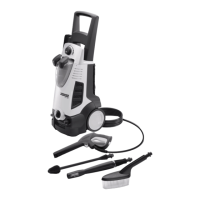
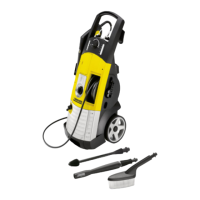
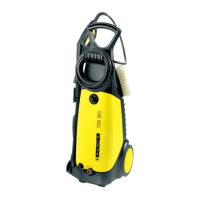
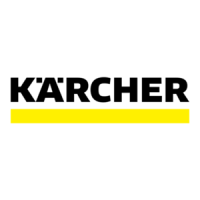



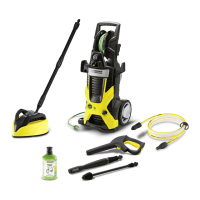
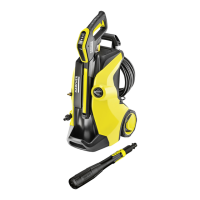
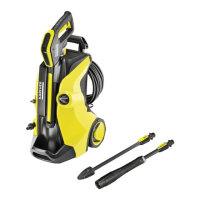
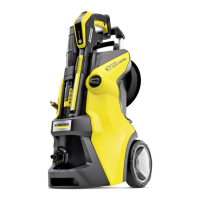
